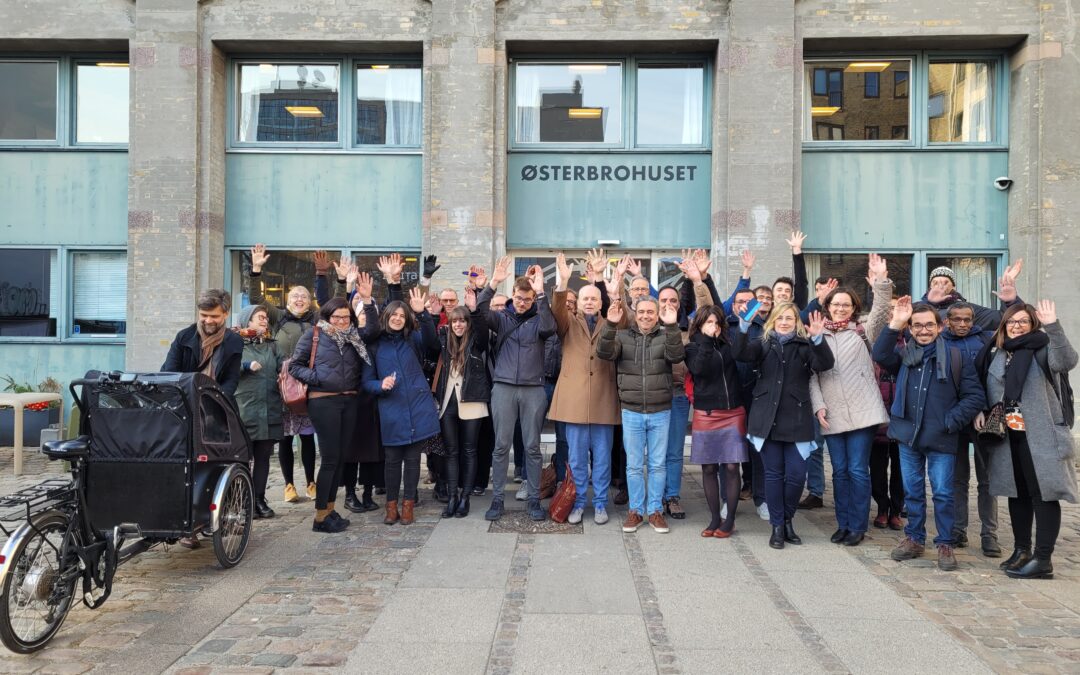On 29-31 March, the ATELIER consortium met in the Fellow City Copenhagen in Denmark for 3 intense days filled with workshops, presentations and site visits. The focus of the event was capacity building for the cities – especially for the 6 Fellow Cities Budapest, Bratislava, Copenhagen, Krakow, Matosinhos, and Riga.
The meeting started with the presentation of the status quo of the PED developments in the Fellow Cities, led by the scientific partners Amsterdam University of Applied Sciences and CARTIF. The cities also shared the planned next steps and the challenges they are currently facing. After the presentation, the groups were shuffled, and the participants provided consultation with the Fellow Cities by putting themselves in the Cities’ situations: “If I were working for the City of Bratislava, I would do XYZ.”
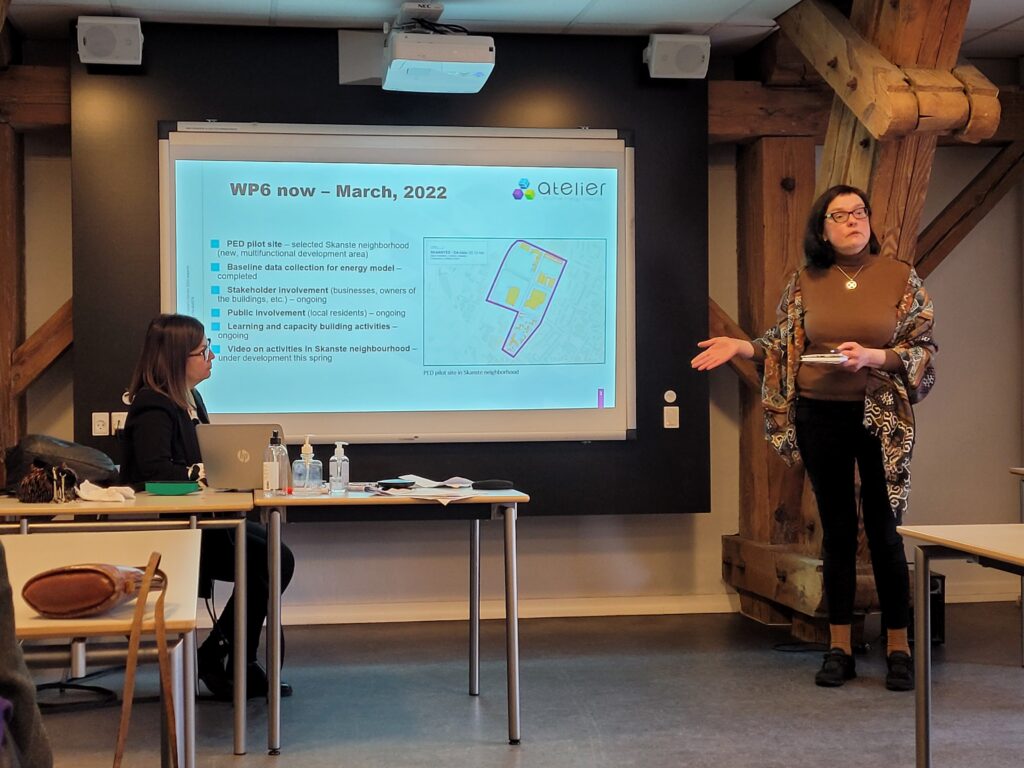
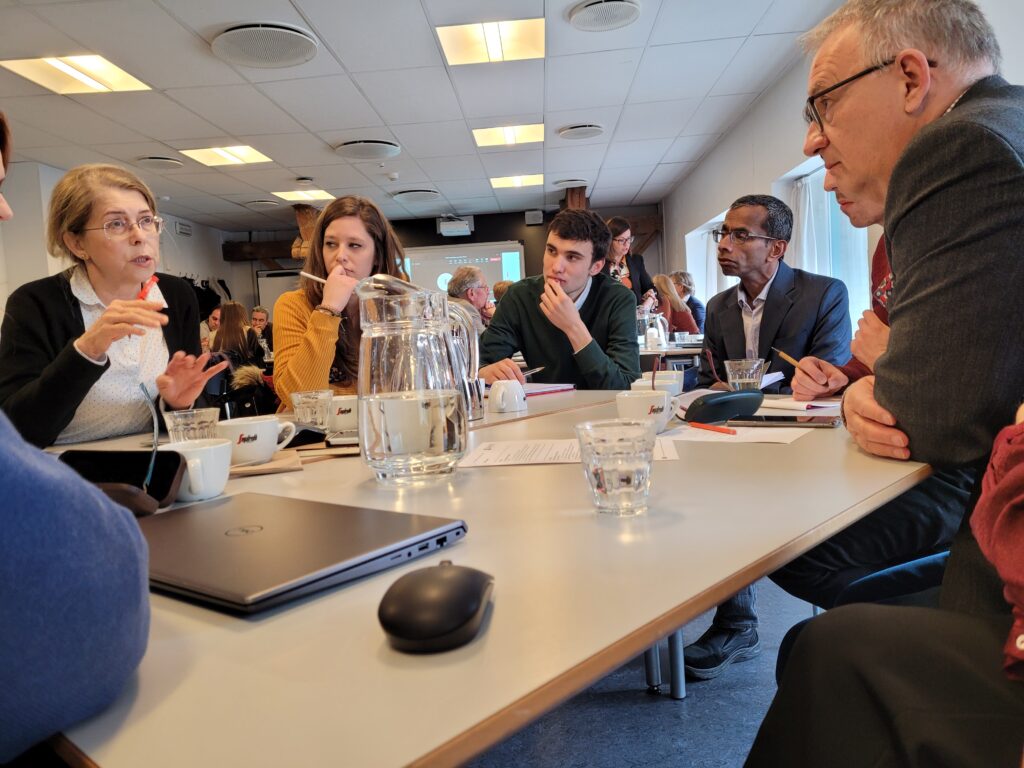
The next session focused on the City Visions for 2050 that are developed by all ATELIER cities. The City Visions include a pathway for full decarbonisation of the cities’ energy systems by 2050. In the exercise led by TECNALIA, the cities worked on different scenarios for the coming years: Business as usual, if no interventions were done and alternative scenarios including different measures of intervention to find out which pathway for decarbonization works best.
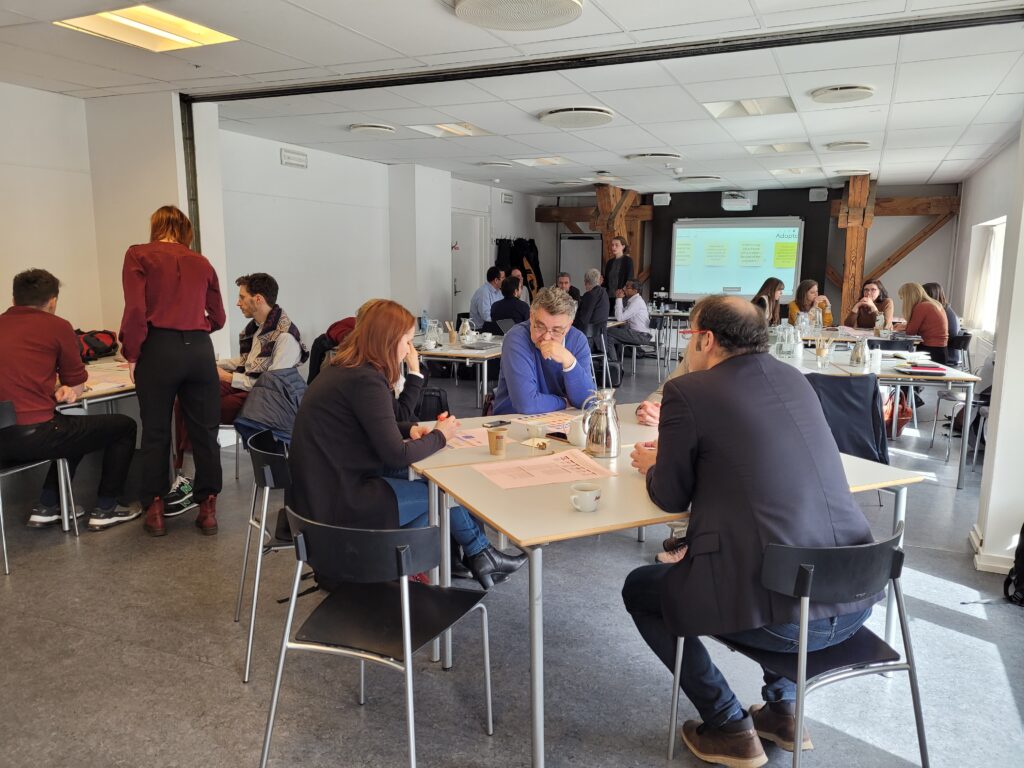
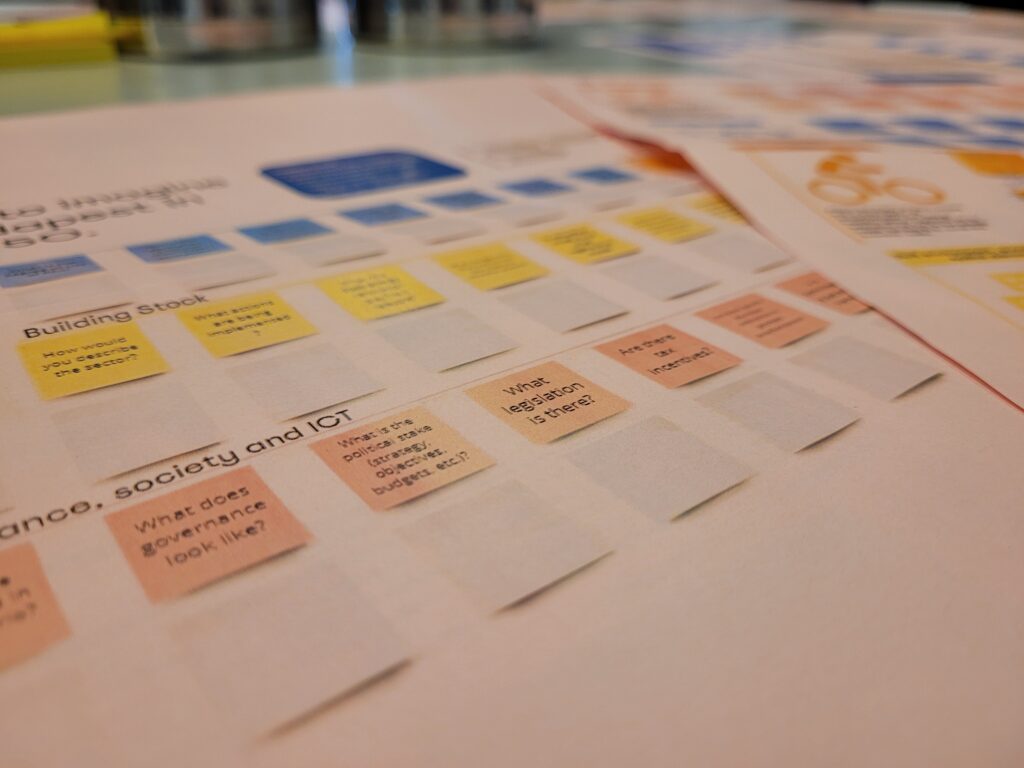
TNO, leader for the Work Package on Innovation Ateliers, facilitated the next exercise, which included a role play on introducing measures for energy savings and energy efficiency in an imaginary city. Every participant played a different role and received confidential instructions for the negotiation, for which the goal was to come to an agreement on which measures should be implemented and financed. Even though every participant had to make sure the interests of the assigned role were sufficiently represented, most of the groups eventually reached an agreement. Despite the exercise not being based on a real example, it reflected the negotiations well and made it possible for city representatives to understand the interests of an energy company or housing cooperation.
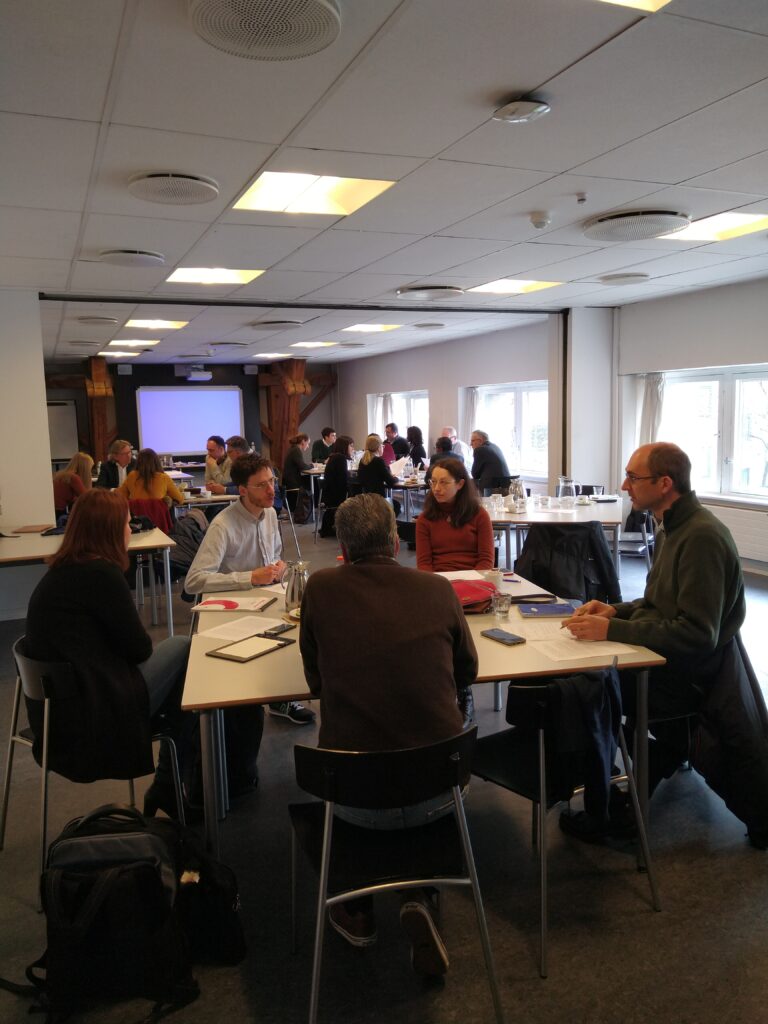
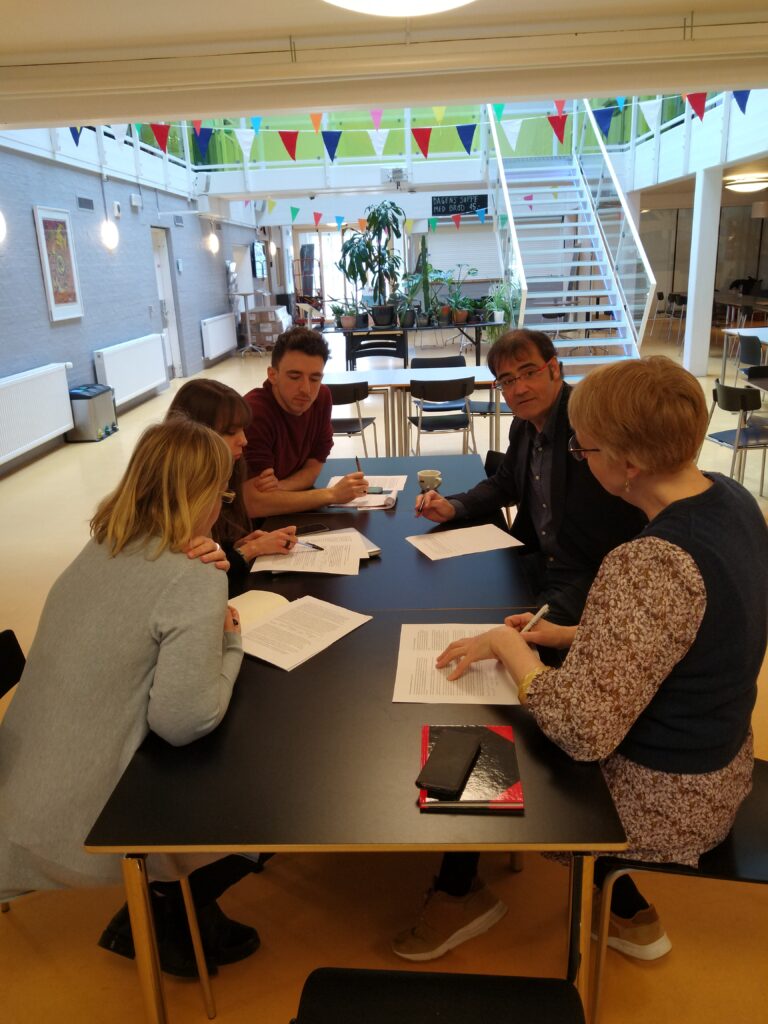
The final session of the day was a creative one. In order to convince stakeholders of their plans, city representatives needed to be able to pitch them compellingly – concise, easily understandable, and with the help of visualisation. Waag, Work Package leader for Citizen Engagement, helped the participants to practice their pitches and draw their plans on big paper sheets.
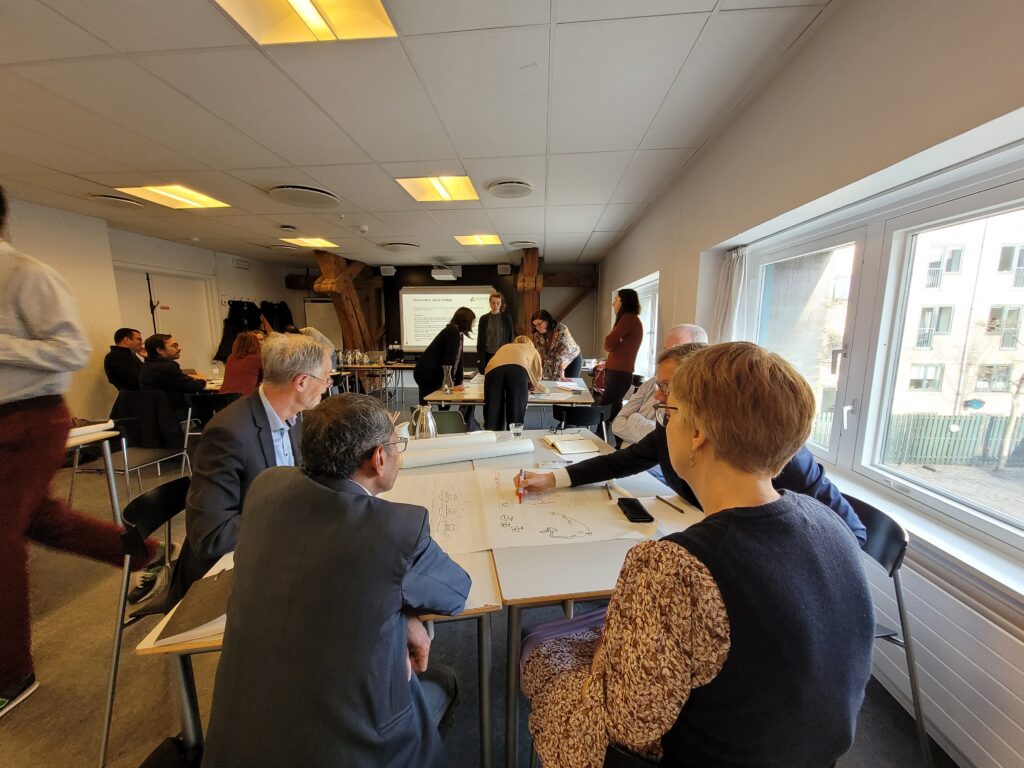

After a long day of brain exercise, it was time to walk outside. The group visited the North Harbour district of Copenhagen through a guided tour by a representative of “EnergyLabNordhavn – New Urban Energy Infrastructures” – a project from 2015 until 2019 that turned the district into a full-scale smart city energy lab and demonstrated how electricity and heating, energy-efficient buildings and electric transport can be integrated into an intelligent, flexible and optimized energy system. The tour also included presentations on an the app “Monta” for more convenient charging of electric vehicles and the transformation of the City of Malmö in Sweden.
Browse through our gallery below for impressions from the tour:
The first session on the second day, facilitated by CARTIF, included a digital online tool that visualizes the plans for a Positive Energy District. By answering a questionnaire with “Yes” or “No” with questions such as “Do you plan to integrate PV panels in your PED?”, the tool creates an overview of the PED, also showing interdependencies between different measures. Using the tool allowed the cities to compare their different approaches better and make prioritizations in the selection of technologies.

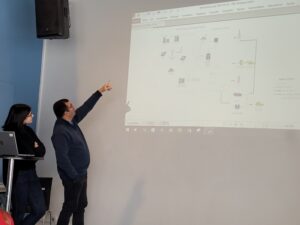
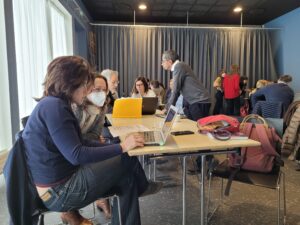
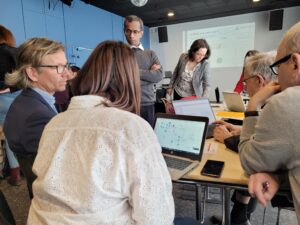
Next, Lighthouse City of Bilbao presented a feasibility analysis for district solutions. For instance, the analysis includes the building stock characteristics, the mapping of degraded areas, or the energy demand of different areas within the city. It provides the city with a basis to conduct the next steps in scaling up and implementing new solutions.
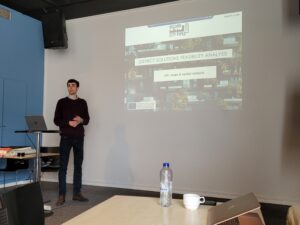
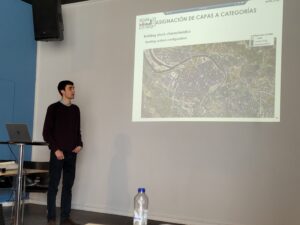
Following up on the visualization and pitch exercise from the previous day, Waag facilitated the next session. Participants were asked to identify the most pressing challenge in their PED development, think about different strategies to solve the challenge, and summarise them in one sheet of paper. This exercise enables the participants to engage deeper in discussing the different challenges.
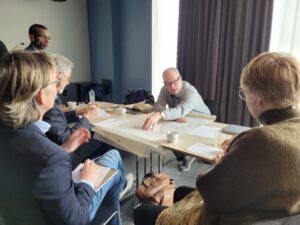
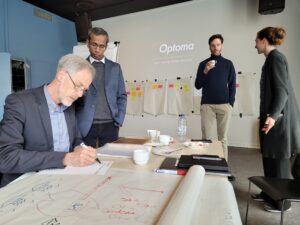
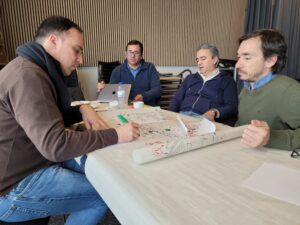
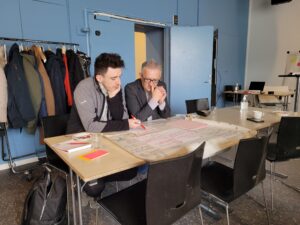
The day was concluded by an evaluation session led by the Amsterdam University of Applied Sciences to reflect on the event’s learning outcomes and discuss open questions, improvements, and next steps within ATELIER. A smaller number of participants stayed one day longer to conduct a site visit to a medium sized heat pump and the heat pump of the Charlottehaven hotel. They discussed Charlottehaven’s perspective on the balance between planning permissions and building integrated renewable energy production.
The following physical meeting of the whole consortium will be in June in the Fellow City of Matosinhos in Portugal. We can’t wait to continue strengthening the capabilities of the ATELIER family!
Image credits: ATELIER
